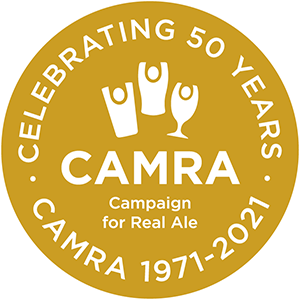Waterloo
West Midlands - Smethwick
Three star - A pub interior of outstanding national historic importance
This pub is currently closed (since 01/01/2011)
Closed in 2012 and sold to new owners in 2016. The upper floors are in residential occupation but the former pub parts remain boarded up. There was a fire in early 2022 but seemingly no significant damage was done to the bar area. The Council's Conservation Officer keeps a close eye on the property and recently reported that he and Historic England's Heritage at Risk Officer would be looking at a strategy for the Waterloo 'as soon as time permits'. In July 2023 the Council served a notice on the owner to tidy up and secure the building.
Listed Status: II*
Waterloo RoadSmethwick
B66 4RQ
Tel: None
Nearby Station: Smethwick Rolfe Street
Station Distance: 1400m
Public Transport: Near Railway Station (Rolfe Street) and Bus Stop
Bus: Yes
View on: Whatpub
The Waterloo was built as a flagship pub-hotel in 1907 for Mitchells & Butlers whose now-demolished brewery was close by. Their architects, Wood & Kendrick, whom they often employed, provided a lavish Edwardian Baroque exterior for this prominent corner site. The interior features stunning tilework. It covers the walls of the public bar and even the ceiling. The counter and bar-back are good, original work too. However, the really spectacular room is the Grill Room in the basement which was a restaurant and has its original grill and all-over tiling. The pub was sold in late 2012 but still nothing is known of its owner’s intentions. The listing was upgraded to II* in 1999 following joint CAMRA/English Heritage fieldwork.
Update 2013:
The Waterloo was bought at auction in October 2012. The new owner indicated a wish, at the time, to use the ground and lower ground floors for a grill room, restaurant and cafe. However, no work was started on this listed building until the Council's Conservation Officer insisted on various urgent repairs to the fabric. The former pub area is largely intact, with just some minor damage to the amazing tiling. The upper floors are to be converted to flats. The Council expects to receive applications for listed building and planning consents shortly.
Update 2016:
The flats are essentially complete and supposedly ready to be let. The original sash window have repaired by a carpenter and have been retained. (Although the owner is considering specialist ‘heritage’ double glazed units – this would need to be agreed and may require a further consent). These works apply to the upper floors only however. There is still no progress regarding the ground floor and basement although they remain dry and are being effectively preserved.
Built as a flagship pub-hotel in 1907 for Mitchells & Butlers whose brewery was nearby. Their architects, Wood & Kendrick, whom they often employed, provided a lavish Edwardian Baroque front for the corner site - M&B terracotta survives on the fascia and high gables. The astonishing features of the interior of this pub is the tilework. It covers the walls of the public bar - and even the ceiling. There are bands of green, blue, cream and salmon with highly decorative Victorian motifs and descending wreaths. The counter and bar back are excellent, original work. If you look at the floor pattern closely you can see how there was once a partition across the middle of the bar. You can also work out how there was a screened-off outdoor area on the left. Behind the bar, a central lobby with service via a hatch-counter has a staircase and fully-tiled walls and ceilings in same style as the bar; off this is a modernised lounge.
But the really spectacular room is the Grill Room in the basement: this was (and still is) a restaurant and features walls and ceilings extravagantly tiled with a frieze of galleons. On one side is the original servery and on the other a cast-iron grill - this superb Edwardian survivor is still fired up and used to cook the grills. The pub also doubled as a commercial hotel and at the top of the stairs you will find a small cubicle that was used by a night-watchman.
 Pub Heritage
Pub Heritage 